Resistance Band Deadlift: All You Need to Know
Author:
Unlock your full potential by engaging with our experts and community! Have questions about your fitness journey or looking for expert advice on weightlifting techniques? Don’t hesitate — leave a comment below and Oleksiy Torokhtiy will provide a personalized answer and insights to help you reach your goals.
Torokhtiy is reader-supported. Some links are affiliate links, and we may earn a commission at no extra cost to you. See our disclosure page for details.
What’s the resistance band deadlift? Is it an effective exercise or not? Should it be included in your training sessions, and if yes, then why? Let’s learn all of that together in this article.
The resistance band deadlift is an excellent exercise for all beginners who want to build strength and learn the correct way to perform the deadlift. It’s also ideal for athletes returning back from injury, as it can be beneficial when building back lost strength.
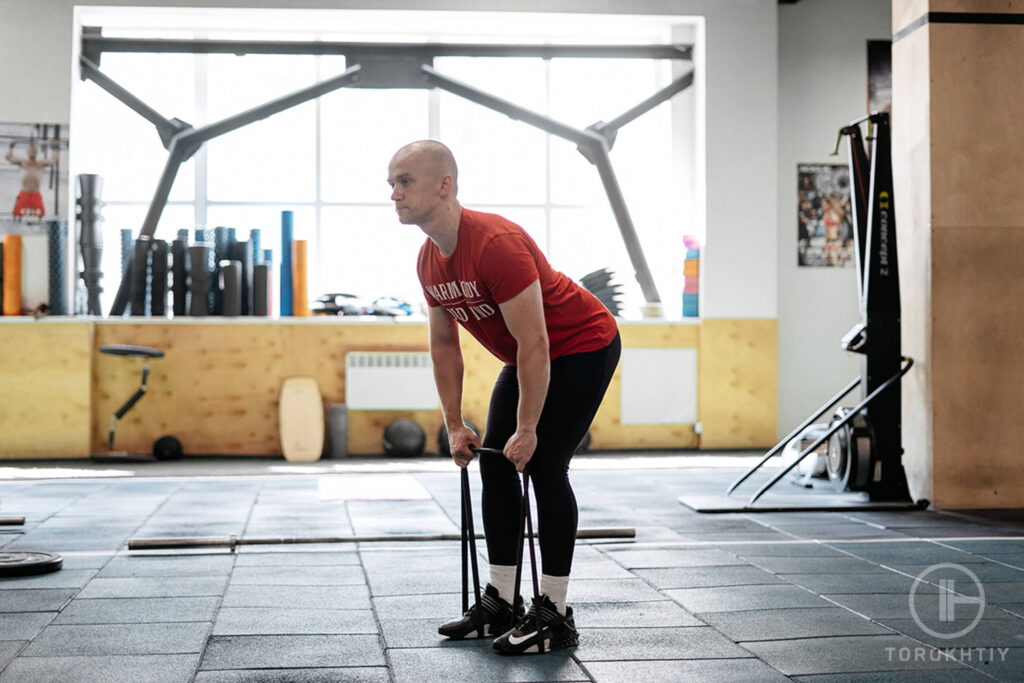
What Is the Resistance Band Deadlift?
Using resistance bands for deadlifts is not an uncommon practice in any way. Having said that, not many lifters know the true value of doing deadlifts with bands and mostly do them simply because an athlete they like and follow incorporates them in their training routine. If we have to explain this exercise in the most basic way possible, it will go like this – the resistance band deadlift is a variation of the classic deadlift.
When performing it, instead of using weights, you use resistance bands to make the movement harder and put a strain on the muscles. Doing the deadlift with resistance bands only is a terrific exercise for people who are new to the lifting world and want to learn how to do the basic exercises properly. It’s also an excellent variation for athletes that are coming back from injuries and want to return to their previous strength levels, as well as for athletes who don’t compete in weightlifting competitions and simply want to enjoy the benefits of the deadlift without lifting a ton of weight.
What Muscles Are Being Used While Performing the Resistance Band Deadlift?
You will often hear the deadlift being referred to as a compound movement. Essentially, this means that it’s a full-body exercise that trains multiple muscle groups. These include:
- Glutes
- Hamstrings
- Back
- Hips
- Core
- Traps
Each variation of the deadlift puts a particular emphasis on a given muscle group; however, if you do the movement correctly, you will always feel it in your back, glutes, and hamstrings the day after.
Follow us!

Free!
Get a 2-week Weightlifting Program as a bonus for the subscription to kickstart your training plan!

Free!
Resistance Band Deadlift Benefits
We already mentioned some of the reasons why people might choose to do a resistance band deadlift; however, we haven’t properly described all the benefits you get from this particular variation of the movement. Having said that, let’s take a look at some of the key benefits you can get from this exercise.
Increase Strength
If you’re a beginner that’s never lifted weights and you feel like you need to build some strength first, then the resistance band deadlift is a great exercise to start with. It trains all the same muscles that the standard variations does; however, it’s a lot less dangerous, and the chances of getting yourself injured, even if you do it incorrectly, are minimal. Along with that, you can build strength up to a certain point with the use of a resistance band, as long as you change the band you’re using frequently and make sure that the resistance it provides remains challenging for you.
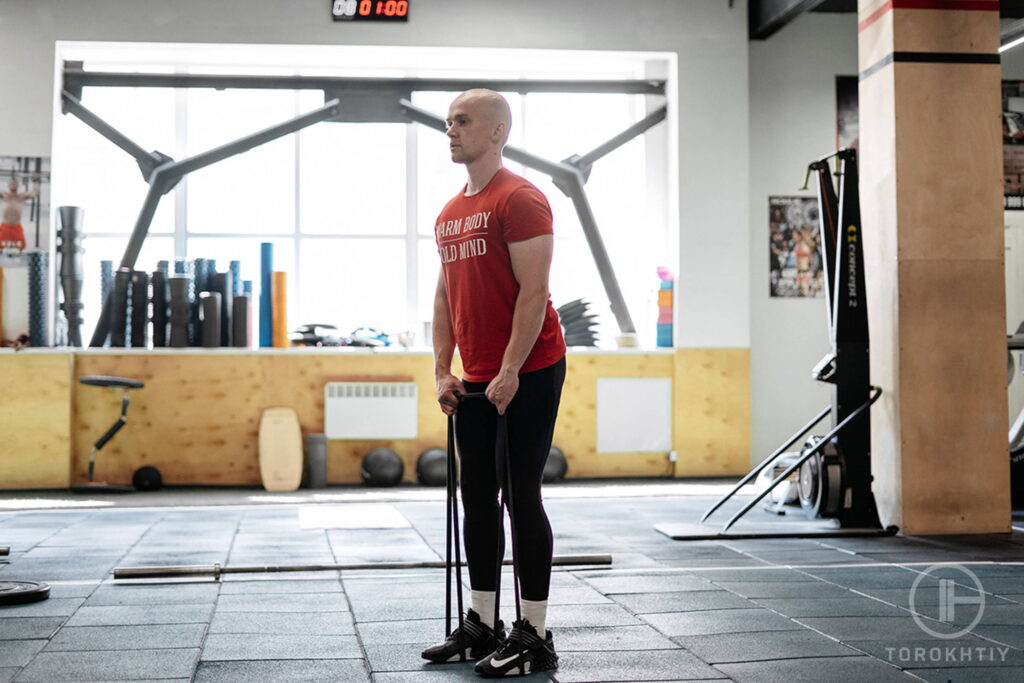
Better Posture
If you want to improve your posture and stand more upright, then the resistance band deadlift is a perfect exercise. It helps expunge the rounded shoulders we get from sitting on a desk for many hours by targeting our back muscles and strengthening them over time. Additionally, by consistently performing this exercise with proper form, we learn to keep the back straight, which can then translate to doing the same while walking and standing.
Prevent Lower Back Pain
Many people with lower back pain or who experience such from time to time avoid doing the deadlift, as they’re scared it might cause more damage and pain. However, most of these people don’t know that doing the movement correctly can actually be beneficial and help minimize the pain you feel. The proper deadlift form requires you to control your abs, pelvis, and hips, and learning all that can be helpful in reducing lower back pain.
Helps Learn Proper Form
If you feel like you’re not performing the deadlift correctly, then you can drop the weights and move on to the deadlift with resistance band. For lifters who don’t need to build on strength, this variation can be beneficial when learning the proper form – because you don’t have to lift heavy, you can perform many repetitions with the resistance band and thus help the brain memorize the correct movement.
Possible Drawbacks of Doing the Deadlift with Resistance Band
Even though there are many benefits from doing the deadlift with a resistance band, there are also some possible drawbacks that you might experience. For example, if you don’t increase the load over time, either by using a band that offers more resistance or by doing the classic version with the weights, you might end up not progressing and not getting the strength benefits that this exercise typically provides. Also, when doing the deadlift with a resistance band, many start performing the movement in bad form, which can lead to learning the exercise incorrectly.
Who Should Deadlift with Resistance Bands?
This exercise is excellent for many people – from beginners who want to increase their strength to professional athletes in need of rehab. This deadlift variation is also ideal if you want to do more repetitions and train for endurance, not pure strength. Basically, as long as you know your goals, you will be able to implement this way of deadlifting into any training program.
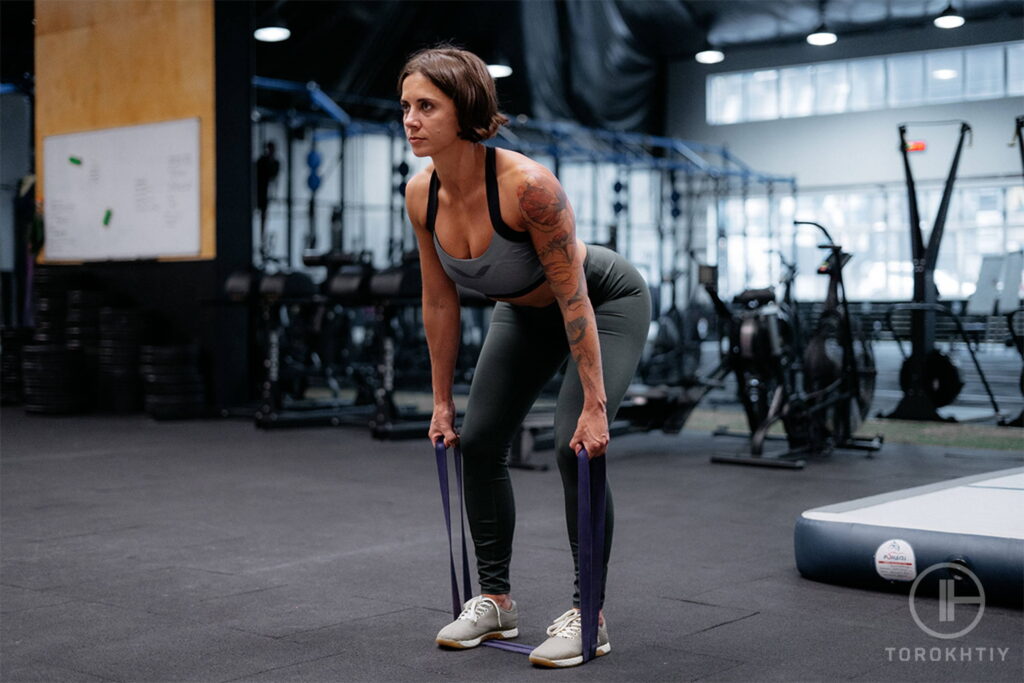
How To Do The Deadlift with Resistance Band? (Step-by-Step Guide)
When it comes to performing this and any other exercise the right way, the first thing you should do is leave your ego at the door. You want to learn the correct form first and then proceed to loading up with more weight or using a band with more tension. Having said that, let’s look at all the steps you must go through to do deadlifts with a resistance band properly.
Step 1: Place the Band Correctly
The first thing you have to do is position the band correctly. To do that, double it up and then stand on both sides of the band, ensuring that it remains under your heel and beneath the arch of your feet.
Step 2: Position Yourself
Make sure your feet are shoulder-width apart and your toes are firmly planted on the ground while ensuring that some of the bands are sticking out on both ends of your feet.
Step 3: Grab the Loops
Lean forward while slightly bending at the knees. Move your hips backward and make sure you maintain your back straight, and your core tightened; while performing this part of the movement, grab the loops that stand on either side of your feet.
Step 4: Stand Up Straight
After that, extend at the knees, contract your muscles and push the glutes forward until you return back to an upright position.
Step 5: Pause and Repeat
At the top of the position, try to catch your breath for a moment and then all the movements from step three onwards.
Along with these instructions, here’s a short video of a personal trainer showing the correct way of performing the resistance band deadlift so that you get a visual sense of what you should be doing:
Resistance Band Deadlift Variations
Along with the classic deadlift, a few other variations of this exercise can be performed with resistance bands. These variations are helpful to know if you want to target specific muscle groups – the glutes, hamstrings, etc. and can help you add variety to your training sessions.
Resistance Band Romanian Deadlift
The Romanian deadlift, or RDL (as it’s commonly referred to), is probably the most popular deadlift variation. You will often see it performed in gyms, even by people who aren’t training for a weightlifting competition. That’s because the Romanian deadlift is terrific for targeting the posterior chain of your lower body – meaning the calves and the hamstrings. With this variation, the hamstring muscles do most of the work, meaning that your glutes and the rest of your leg muscles have less work to do. Along with that, the lower back muscles get more activated, as your upper body is much more parallel to the floor. Here’s a quick video that shows you how to perform this deadlift variation with a band.
Resistance Band Sumo Deadlift
The sumo deadlift is yet another popular variation of the conventional deadlift. With it, the focus of the movement goes from the back to the leg, meaning that your legs and glutes will have to do most of the work during this exercise. This variation is great for athletes who want to target their glute and leg muscles while minimizing the toll on the lower back, as here, it has to work much less compared to the traditional deadlift. Learning how to do the sumo deadlift with a resistance band takes a bit of trial and error, but this clip here shows the perfect way to do it, so you can easily implement it in your next gym session.
Resistance Band Single-Leg Deadlift
This variation of the deadlift is perfect for athletes who want to train their balance and improve their stability. In order to properly do it, you need to stand on one leg and do a slight bend in the knees, making all the muscles in the legs work harder while also training the core to be more stable. The single-leg deadlift is mainly done by professional and semi-professional athletes in all kinds of sports, from soccer to tennis and basketball, as it’s a movement that helps improve your overall athletic ability. Luckily, it can be easily done with resistance bands and weights, as shown in this video.
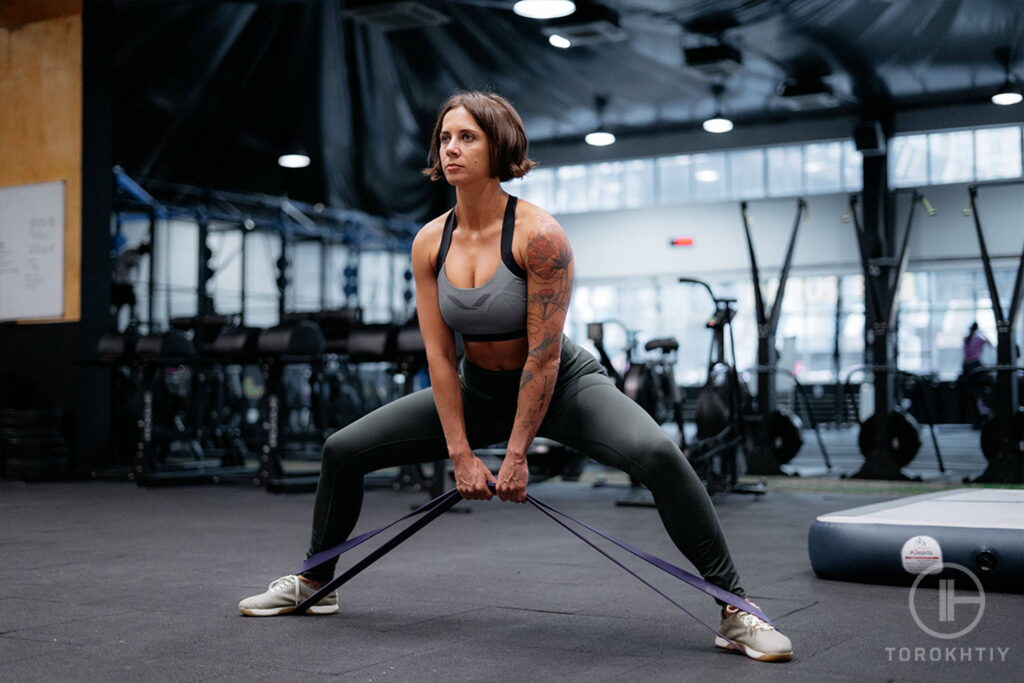
How to Choose Which Bands to Use
When choosing which bands to use for deadlift training, you should keep a few things in mind. Firstly, you want to have at least two or three bands, each with different tension – starting with minimal tension, then having some sort of a middle-ground option, and finishing with bands that offer great tension and present a challenge to you. Having all three kinds will ensure you can progress in your training. Along with that, you want to look for bands that are made from high-quality rubber and will be able to withstand many training sessions.
A set of bands we can recommend is the FitLife Resistance Bands, which offers a perfect blend of quality, durability, great price, and versatility. This set includes four bands, each one of which offers a different tension:
- 15-35 lbs and 0.51”
- 50-75 lbs and 0.82”
- 75-120 lbs and 1.26”
- 120-175 lbs and 1.77”
This makes them great for both beginners and advanced athletes, as well as for both men and women.
F.A.Q.
Are Resistance Band Deadlifts Effective?
Absolutely! They’re a great exercise for learning the correct deadlift form and for building strength while you’re a beginner or simply if you’re training at your home gym.
Can Resistance Bands Replace Weights?
For beginners – yes. After a certain point as a lifter, you will have to start incorporating weight training if you want to progress in your strength and get better numbers. With that said, for some athletes, resistance bands can fully replace weights, especially if they’re training for endurance and not strength.
Can You Make Barbell Deadlifts Harder with Resistance Bands?
Yes. Adding a resistance band to your barbell deadlifts challenges the muscle at the end of the movement, where the weight usually feels the lightest.
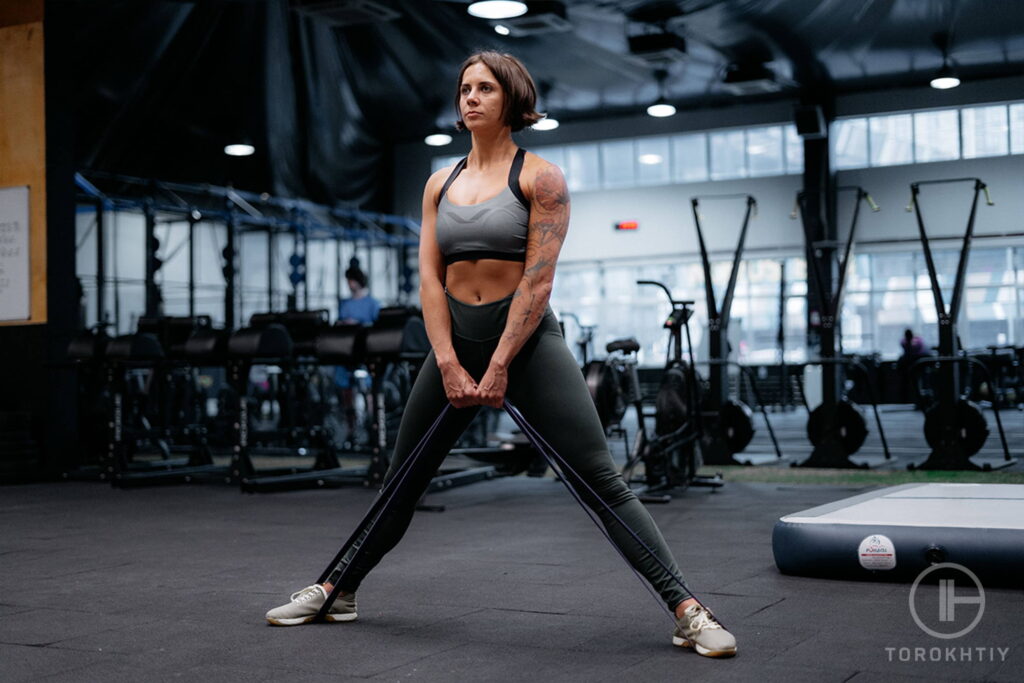
In Conclusion
Doing resistance band deadlifts offers many benefits for both beginners and more advanced athletes. It’s a terrific exercise for building strength, learning proper deadlift form, or simply rehabbing yourself from an injury. Having said that, we’d like to know how many of you are doing resistance band deadlifts and your experience. Please share it in the comment section.
Also read:
- Best Pull Up Assist Bands
- Resistance Tubes Vs Bands
- Resistance Band Lat Pull Down
- Rows With Bands
- What Size Resistance Bands Do I Need
- Resistance Bands Guide
References:
- Common posture mistakes and fixes // NHS:
https://www.nhs.uk/live-well/exercise/strength-and-flexibility-exercises/common-posture-mistakes-and-fixes/
Why Trust Us?
With over 20 years in Olympic weightlifting, strength training, nutrition coaching, and general fitness our team does its best to provide the audience with ultimate support and meet the needs and requirements of advanced athletes and professional lifters, as well as people who strive to open new opportunities and develop their physical capabilities with us.
By trusting the recommendations of our certified experts in coaching, nutrition, and sports training programming, as well as scientific consultants, and physiotherapists, we provide you with thorough, well-considered, and scientifically proven content. All the information given in the articles concerning workout programming, separate exercises, and athletic performance, in general, is based on verified data.
The product testing process is described in more detail here.
Author: Oleksiy Torokhtiy
Olympic Weightlifting Champion, PhD in Sport Science
Best Results: Snatch – 200 kg,
C&J – 240 kg
Oleksiy Torokhtiy is a professional athlete boasting 20 years of experience in Olympic weightlifting. With multiple European and World titles under his belt, he has showcased his prowess in two Olympic Games (Beijing 2008 and London 2012). Upon concluding his illustrious career, Oleksiy dedicated himself to coaching. By 2022, he had conducted over 200 weightlifting seminars worldwide. He is the visionary behind an international sportswear and accessories brand known for its motto, “Warm Body Cold Mind.” Additionally, he is an esteemed author and the creator of a series of training programs and eBooks.



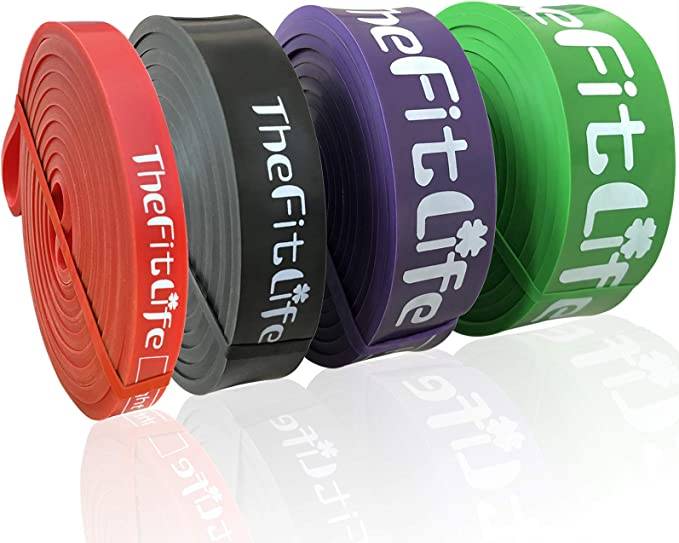
Still have questions after reading our article? Unlock your full potential by engaging with our experts and community! Don’t hesitate — leave a comment below and Oleksiy Torokhtiy will provide a personalized answer and insights to help you reach your goals.